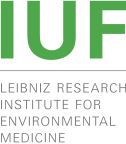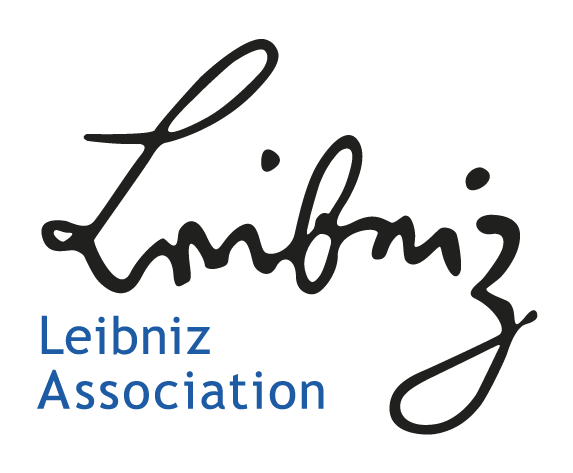The WG Koch is specialized on the set up and scientific validation of alternative methods to animal experiments and their use for mode-of-action analyzes of substances. The work focuses on developmental and adult neurotoxicity, yet also includes other toxicological endpoints like embryotoxicity and developmental immunotoxicity. We set up a species-overarching (human, mouse, rat, rabbit) 3D neurosphere test system for quality-controlled, standardized and largely automated developmental neurotoxicity (DNT) hazard characterization that is an integral part of the DNT in vitro battery supported by EFSA and the OECD. In collaboration with Prof. Axel Mosig (RUB) artificial intelligence-based cell identification from high content imaging analyzes was established. A data base (RUB) and a biostatistical pipeline (github.com/ArifDoenmez/CRStats) were set up for comparative biostatistical data processing. This DNT platform is currently used for testing exposure-relevant chemicals for the US-National Toxicology Program. Mechanistic studies of the group feed into the Adverse Outcome Pathway (AOP) concept and we set up multiple neurotoxicity AOPs. The DNT work is expanded to endocrine disruption-mediated DNT and one of our established assays is currently under validation at the French platform PEPPER. Our data also contributes to the novel toxicological concept of ‘ontologies’ for ‘cognitive function defects’ with the aim of regulatory application. All these tools together with our newest BrainSphere model for assessing acute neurotoxicity contribute to next generation risk assessment in the EU-PARK project. The BrainSphere models are also used for studying disease mechanisms of the Cockayne Syndrome B in the IUF Leibniz collaborative excellence project within the Leibniz Competition.
Interim head:
Katharina Koch
Molecular and cellular studies for the understanding of flame retardants single modes-of-action and mixtures effects related to their kinetics in vitro (DFG)
The chemical group of flame retardants (FRs) comprises diverse classes of compounds, applied to furniture and consumer products, like plastics and textiles as well as electrical devices and baby products to reduce the risk of fire. The earliest FRs used were already banned from the market due to their toxicity and they also had a high potential to leak into the environment and are found in environmental samples, house dust, food, animal and human tissues. They were identified as hazardous to human health, as they especially induce neurodevelopmental toxicity. Considering these facts, there was a clear need to replace these compounds by safe(r) and less persistent alternatives, e.g. by organophosphorus FRs (OPFRs). Since OPFRs are not chemically bound to polymers, they are released into the environment via volatilization, abrasion and dissolution, which leads to a ubiquitous occurrence of OPFRs in various indoor environmental matrices, such as food, drinking water, indoor air and dust. Therefore, humans are exposed to OPFRs via ingestion, inhalation and dermal absorption. The levels of OPFRs found in the environment, in house dust, furniture foam, infant products and even in human body fluid samples are increasing, and therefore, it is important to understand the modes-of-action (MoA) of OPFRs for a mechanism-based risk assessment.
The overall goal of this DFG-funded project is to investigate the molecular hazards of different FR classes on oligodendrogenesis. These studies are based on previous work that identified oligodendrocytes as the most sensitive cell type for a broad variety of FR in a developing multi-cellular in vitro model based on human NPCs (Klose et al. 2021).
New Approach Methodologies (NAMs) to study developmental glial cell toxicity of food toxicants (BRAIN HEALTH; EFSA)
The worldwide rise in neurodevelopmental disorders over the last decades has led to concerns that hazardous chemicals in the environment may be among the contributing causes. Regulatory risk assessment of developmental neurotoxic (DNT) chemicals relies exclusively on animal testing. The European Parliament as well as international regulatory bodies are focusing efforts on developing New Approach Methodologies (NAMs) that will decrease time and costs in chemical hazard assessment without the use of animals. International efforts, including the working group (WG) Koch, have led to the development of the DNT In Vitro Battery (DNT IVB), and of initial recommendations from the OECD to interpret the data for use in regulatory decisions. However, the extreme involvement of glia cells (i.e. astrocytes, oligodendrocytes and microglia) in key neurodevelopmental processes such as migration, synaptogenesis, myelination and neural network formation are not currently reflected in the DNT IVB and point to clear knowledge gaps. In the BRAIN HEALTH project, we aim to further expand, characterize and develop the DNT IVB NAMs containing glial cell types vital for normal brain development (i.e. radial glia, astrocytes, oligodendrocytes and microglia).
Accessible Innovative Methods for the Safety & Sustainability Assessment of Chemicals & Materials (CHIASMA; EU, Horizon Europe)
The CHIASMA’s overarching objective is to devise and demonstrate a comprehensive set of New Approach Methodologies (NAMs) and integrate them in a user friendly, reliable and robust framework to perform human and environmental safety evaluation in a regulatory context. The developed approaches will be tested on three test cases, namely PFAS, (nano-)pesticides, and 2D chemicals/materials for energy applications, demonstrating regulatory relevance and trans-domain applicability of the CHIASMA-framework. Within the consortium the WG Koch investigates how environmental factors interfere with molecular and cellular processes and thereby cause adult or developmental neurotoxicity. The WG Koch is responsible for development and validation of 3D neurotoxicity models and providing internationally accepted DNT models for compound evaluation and will also contribute an R-based biostatistical pipeline for data analyses.
Lab-to-lab validation of NPC1_RAR_GR assay assessing retinoic acid receptor (RAR) and glucocorticoid receptor (GR)-dependent disruption of neural progenitor cell (NPC) proliferation (Pepper)
The NPC1_RAR_GR assay is a test method developed by the WG Koch to identify chemicals that disturb signaling of the retinoic acid receptor (RAR) and glucocorticoid receptor (GR) in proliferating human neural progenitor cells (hNPCs). The purpose of this study is the lab-to-lab validation of this assay in three different laboratories, the IUF being one of them, using four test items with known effects on the assay endpoints in phase 1 and 20 test items with unknown effects on the assay endpoints in phase 2.
ENDpoiNTs - Novel testing methods for endocrine disruption linked to developmental neurotoxicity
The European Union Horizon 2020 research and innovation project ENDpoiNTs develops novel testing and screening methods to identify endocrine-disrupting chemicals (EDCs) that induce human developmental neurotoxicity (DNT). There is strong evidence supporting associations between EDC exposure and impaired neurodevelopment. However, regulatory guidelines for the hazard assessment of EDCs do not cover DNT. One reason is the lack of scientific knowledge on how endocrine disruption (ED) is linked to DNT. Thus, there is an urgent need for novel testing and screening tools to address ED-induced DNT, based on new scientific knowledge. In ENDpoiNTs, we develop a testing battery of in vivo, in vitro, and in silico models to test and screen chemicals for endocrine-disrupting properties impacting human neurodevelopment. Finally. these methods shall be integrated into European and international chemical regulatory frameworks. The project concept is based on two pillars:
- Module 1: Test method development. Establishment of correlative and causal links between the modulation of endocrine pathways and DNT endpoints.
- Module 2: Human & regulatory relevance of the developed test methods. Establishment of human relevance by linking experimental and epidemiological evidence and regulatory impact by continuous interaction with stakeholders.
ONTOX – ONTology-driven and artificial intelligence-based repeated dose TOXicity testing of chemicals for next generation risk assessment
The vision of the ONTOX consortium is to provide a functional and sustainable solution for advancing human risk assessment of chemicals without the use of animals in line with the principles of 21st century toxicity testing and next generation risk assessment. ONTOX will deliver a generic strategy to create innovative new approach methodologies (NAMs) addressing adversities in the liver (steatosis and cholestasis), kidneys (tubular necrosis and crystallopathy), and developing brain (neural tube closure and cognitive function defects) induced by a variety of chemicals. Each NAM will consist of a computational system based on cutting-edge artificial intelligence (AI) and will be primarily fed by available biological/mechanistic, toxicological/epidemiological, physico-chemical and kinetic data. Data will be consecutively integrated in physiological maps, quantitative adverse outcome pathway networks, and ontology frameworks. Data gaps, as identified by AI, will be filled by targeted state-of-the-art in vitro and in silico testing. NAMs will be used to predict systemic repeated dose toxicity effects that, upon combination with tailored exposure assessment, will enable human risk assessment. They will be evaluated and applied in collaboration with industrial and regulatory stakeholders in order to maximize end-user acceptance and regulatory confidence. ONTOX is funded by the European Union research and innovation funding programme Horizon 2020.
European partnership for the assessment of risks from chemicals (PARC)
The Horizon Europe project “European partnership for the assessment of risks from chemicals (PARC)”, funded by the European Commission, aims to shape the methodological landscape of chemical risk assessment in Europe for the next decade. With more than 200 partners from all over Europe and a budget of €400 million, PARC is one of the largest projects of its kind in the world. Between 2022 and 2027, the working group Koch will contribute to the work package 5, which overall goal is to focus on hazard assessment for human and environmental health in three different directions: fill data gaps identified by key stakeholders, develop and/or improve methodologies for hazard assessment to progress towards next generation risk assessment (NGRA).
NTP Screening project
The US National Institute of Environmental Health Sciences (NIEHS) Division of the National Toxicology Program (DNTP) has identified developmental neurotoxicity (DNT) and the increase in neurodevelopmental disorders as a societal health risk. Chemical exposure is thereby considered a relevant risk factor and the DNTP wants to better understand how chemicals trigger DNT. Therefore the DNTP commissioned the testing of 115 chemicals in new approach methods that are based on alternative model organisms (e.g. zebrafish) or cell-based methods. In this project, we test the set of 115 chemicals in the human “Neurosphere Assay”. The assay is based on human neural progenitor cells that are grown in three-dimensional spheroids and it represents several key processes of human brain development, namely, cell proliferation, migration, neuronal differentiation and morphology as well as oligodendrocyte differentiation. The assay is applied in a semi-automated medium-throughput set-up and can identify the potential of a chemical to disturb any of the aforementioned processes. This project is funded by the National Toxicology Program (NTP).
More information: https://ntp.niehs.nih.gov/
CEFIC-LRI-AIMT11: Enhancing in vitro DNT testing strategy
In light of the necessity to refine the existing test methods for the assessment of developmental neurotoxicity (DNT) of chemicals, a DNT in vitro battery (DNT-IVB) has recently been assembled under the supervision of the European Food Safety Authority (EFSA). Despite its extensive coverage of neurodevelopmental key events, the current DNT-IVB mainly focuses on neurons and oligodendrocytes. By implementing endpoints based on radial glial cells, astrocytes, and microglia, we aim to further improve the predictivity and performance of the current test battery. The project is being carried out in cooperation with the research group of Prof. Marcel Leist at the University of Konstanz and funded by the Long-Range Research Initiative (LRI) Programme of the European Chemical Industry Council (CEFIC).
RTG2578 – Project 1c: Investigations on DNA repair capacities of human neural progenitor cells (NPC) depending on the degree of differentiation and cell type
The Research Training Group (RTG) 2578 combines expertise in toxicology and stem cell research to study the impact of genotoxins on the differentiation efficacy of murine and human stem and progenitor cells and the functional competence of thereof derived differentiated progeny. In the subproject 1c, we analyze the impact of genotoxins with different modes-of-action on human brain development, by focusing on the DNA damage response and repair capacity during different developmental time points and cell types. The project is funded by the Funded by the German Research Foundation (DFG).
Establishment of human induced pluripotent stem cell (hiPSC)-based assays for testing for developmental immunotoxicity in vitro
The mammalian immune system is a highly complex, interactive network of cells that facilitates innate and adaptive immune responses. The neonatal immune system may be much more susceptible to chemical perturbations than that of the adult and hence the effects of immunotoxicants during development may not be fully detected in toxicity studies performed on adult animals. Furthermore, the majority of regulatory agencies worldwide do not routinely require developmental immunotoxicity (DIT) testing for chemicals and pharmaceuticals. DIT studies are resource-intensive as they take almost one year, produce high costs and use a large number of animals. Moreover, developmental differences in immune system development are evident among species compared to humans, making extrapolation from rodents to humans difficult. Therefore, the aim of this project is to take a first step on the road to the development of a human cell-based in vitro DIT battery using hiPSC-based development of the different immune cells covering the following aspects of the developing immune system: (i) primitive hematopoiesis and (ii) definite hematopoiesis towards the T-cell lineage. The newly established assays will then be used to test compounds for their DIT potential. The project is sponsored by Clariant AG, Schweiz.
For more information please visit: https://www.leibniz-alternatives.de/
Cross-species characterisation of the molecular and cellular effects of thyroid hormones on the development of neural progenitor cells in vitro
Thyroid hormones (TH), thyroxine (T4) and the more active 3,3',5-triiodothyronine (T3) are indispensable for normal brain development and can influence numerous neurodevelopmental processes. However, there is a profound data gap on understanding of TH transport and specific TH action within individual brain cell types. Within this project, we are using e.g. single cell RNA sequencing to investigate the cell type-specific regulation of TH-dependent genes in a species-specific context. The aim is to gain understanding of the molecular and cellular effects as well as the distribution kinetics of TH in human and rat neurospheres with the final goal of in silico modulation of TH transport and molecular as well as cellular TH actions. Using existential in vivo rat data, this project allows quantitative in vitro to in vivo extrapolation (QIVIVE) resulting in a quantitative Adverse Outcome Pathway (AOP) network concerning brain development. The project is funded by Syngenta United Kingdom Limited - Jealott’s Hill International Research Centre.
Leibniz Alternatives: Cooperation between industry and academic research to develop and use alternative methods to animal testing
Avoiding animal testing to the greatest possible extent is an aim of relevance to the whole of society and therefore also of great interest to the leading chemical companies. Accordingly, in July 2020, the Leibniz research platform Leibniz Alternatives has been established by the IUF and is operated as a public-private partnership to optimize collaboration between academia, industry and regulators in the field of alternative methods.
Leibniz Alternatives uses and validates in vitro assays for specific toxicological questions with human relevance. The methods used are state-of-the-art and some of them are unparalleled anywhere in the world. By automating application and evaluation processes, we make sure that results can be reproduced, checked, and thus used in accordance with regulatory frameworks. Leibniz Alternatives offers hands-on training for the method transfer of already established in vitro assays. Furthermore, it assists industry and authorities with matters relating to the use and interpretation of alternatives to animal testing. The platform is led by Ellen Fritsche. Her current research focus is on developmental and adult neurotoxicity, embryonic toxicity, endocrine disruption, and their involvement in adverse outcome pathways. She has received several awards for her work over the years, including the Ursula M. Händel Animal Welfare Prize awarded by the DFG. She also advises industry and European authorities.
IUF internal:
WG Esser
WG Haarmann-Stemmann
WG Krutmann
WG Schins
LG Ventura
National:
Prof. James Adjaye, University Hospital Düsseldorf
Prof. Orhan Aktas, University Hospital Düsseldorf
Prof. Karl Köhrer, BMFZ, University Hospital Düsseldorf
Prof. Kai Stühler, BMFZ, University Hospital Düsseldorf
Prof. Axel Mosig, Ruhr University Bochum
Prof. Monika Schäfer-Korting, Freie Universität Berlin (one of the universities in Berlin)
Prof. Marcel Leist, UKON
Prof. Bettina Seeger, TiHo Hannover
Prof. Moritz Roßner, LMU Klinikum München
Prof. Andreas Blaeser, TU Darmstadt
Prof. Burkhard Kleuser, FU Berlin
International:
Prof. Jean-Marc Egly, IGBMC Strasbourg, France
Prof. Pamela J. Lein, UC Davis, California, USA
Dr. Oddvar Myhre and Hubert Dirven, Norwegian Institute of Public Health
Dr. Helena Hogberg, NIEHS, USA
Dr. Marie-Gabrielle Zurich and David Pamies, University Lausanne
Prof. Klara Hilscherova, Masaryk University Czech Republic
Dr. Timothy Shafer, US-EPA
Dr. Magdalini Sachana, OECD
Dr. Andrea Terron, EFSA
Prof. Ola Spjuth, University Uppsala
PhD students
Master students
Technical assistance




